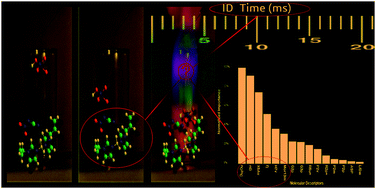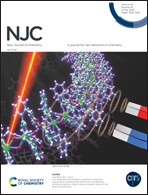Model development and design criteria of hypergolic imidazolium ionic liquids from ignition delay time and viscosity viewpoints†
Abstract
At present, it is an acceptable fact that there is a relationship between the ignition delay time and viscosity of hypergolic energetic ionic liquids (HEILs). With this presumption, an investigation was made to obtain the best logical relationships between ignition delay time, viscosity and molecular structure of hypergolic imidazolium ionic liquids. For this reason, the 3D chemical structure of a collected database of 50 imidazolium ionic liquids was encoded into a total number of 3250 diverse types of molecular descriptors, which are representatives of various physicochemical properties of these ionic liquids. Then, the MLR-ANN approach was applied to obtain the most important molecular descriptors on these relationships. The obtained results of the proposed 3D QSPR models were applied as a criterion for designing new hypergolic imidazolium ionic liquids with the desired ignition delay time and viscosity. Moreover, the predictive ability of the final derived models was evaluated by both internal and external validation methods. The results of this work can assist the computer-aided molecular design researchers to find out or design new HEILs with optimum physicochemical properties.



 Please wait while we load your content...
Please wait while we load your content...